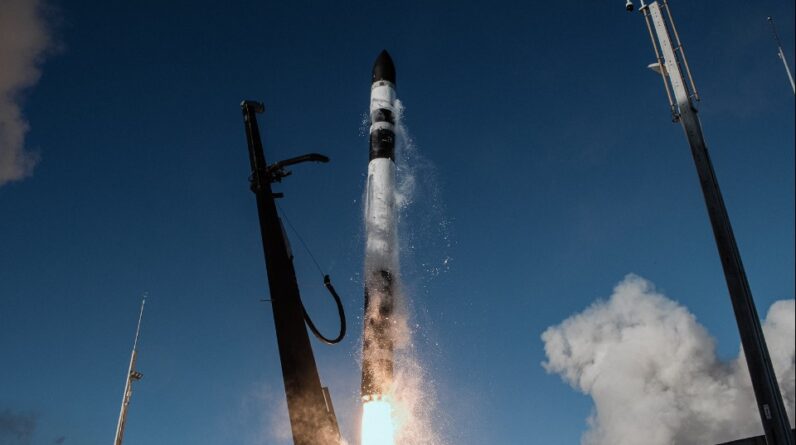
[ad_1]
The ‘Coming To A Storm Near You’ launch was the second of two dedicated Electron launches to deploy a constellation of hurricane monitoring satellites for NASA
Source – Rocket Lab
Rocket Lab’s next Electron launch features upgrades to the rocket, bringing the company a step closer to reusing its first stage.
Rocket Lab’s “Baby Come Back” mission is set to launch seven satellites into orbit Sunday (July 16) during a two-hour window that opens at 7:30 p.m. EDT (2330 GMT; 11:30 a.m. local New Zealand time on July 15).
Sunday’s launch will be number 39, and the Electron rocket is aptly named. Rocket Lab’s CEO, Peter Beck, says the company is taking methodical steps toward eventually reusing the first stage of the light-class Electron rocket but did not identify a timetable for re-flying a booster, Space News reports.
 Splash it down, put it on a boat, and sail off into the sunset. Rocket Lab.
Splash it down, put it on a boat, and sail off into the sunset. Rocket Lab.
The New Zealand company has successfully recovered several Electron boosters intact since announcing plans to reuse the rocket’s first stage in 2019.
Rocket Lab says the boosters recovered from the water are in better shape than expected, and Sunday’s flight—slated to carry seven small satellites into orbit—will debut an optimized parachute design and changes inside the booster to prevent salt water from damaging sensitive internal components.
Such work is part of the company’s effort to make the first stage of the 59-foot-tall (18 meters) Electron reusable, like that of SpaceX’s workhorse Falcon 9 rocket. There are key differences between the two recovery strategies, however.
For example, Falcon 9 boosters steer themselves to powered vertical touchdowns; Electron is too small to have enough fuel left over for such maneuvers, which explains the parachutes.

Varied satellite payload for “Baby Come Back”
Rocket Lab’s main goal is to get the seven satellites to orbit safely. Four of those payloads are tiny CubeSats for NASA’s Starling mission, which is designed to test tech for future “swarm” missions.
“Spacecraft swarms refer to multiple spacecraft autonomously coordinating their activities to achieve certain goals,” Rocket Lab wrote in a mission description.
“Baby Come Back” will also loft the LEO 3 demonstration satellite for the Canadian communications company Telesat and two CubeSats for Spire Global, a Virginia company whose satellites observe Earth in radio frequencies.
[ad_2]
Source link






